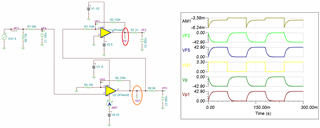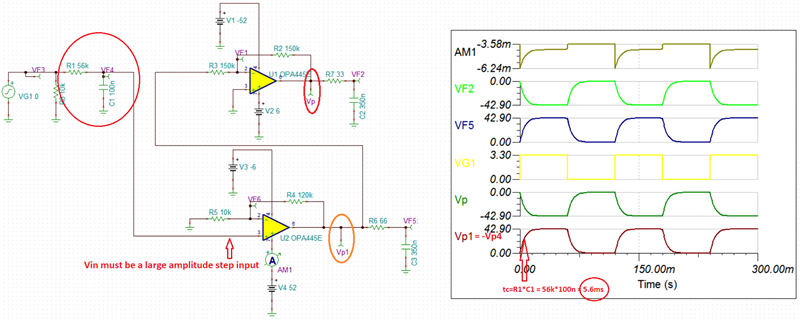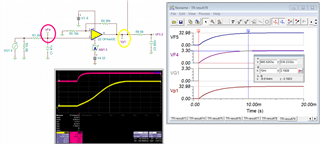Other Parts Discussed in Thread: OPA455, OPA462, OPA452
How can the OPA445 improve the slew rate of the noninverting and inverting amplifier circuits?
Currently, I am looking at the operation of the actual device, but the slew rate is several times smaller than the results of the simulation (slower)
・diagram
・wave form
red: input(VF4), yellow: output(VF5)
Regards,
Hironori Kishida
Evident Corporation







